Now that the iron has been built, it is time to see if I can bend wood on it. The basic question is whether or not the pipe will get hot enough to relax the wood for bending. The most expedient way to test that is to try bending some wood. I did not want to risk any of my good wood until I know I can do this properly, so I fetched some really junky stuff out of the pile and clamped it to the bench.
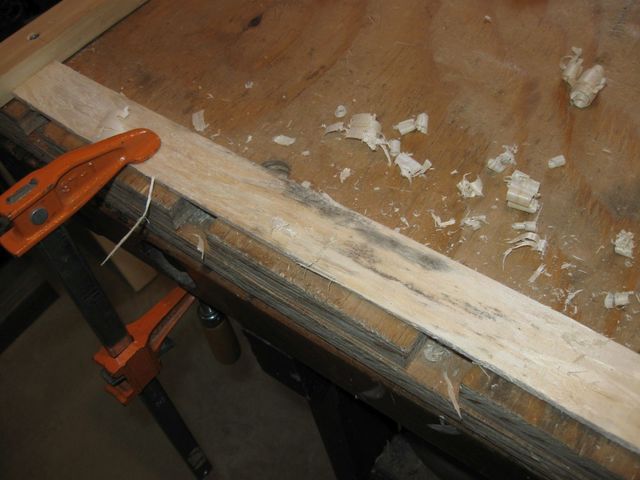
Really Trashy Wood
That is plaster lath. I bought a bundle of it thinking that it might be of use in another project to make rustic picture frames. It turned out to be so horrid that I couldn't even use it for that. It is so green that I couldn't cut it or scrape it or glue it. But I thought that for a test I might be able to bend it.
The wood is nominally 1 1/2" wide and 1/4" thick by four feet long. I cut one foot off the length of it since I will not need more than 3 feet of wood for the dulcimer sides. Then, I got out my planes to cut the thickness down. At first I tried the old wooden jack plane that I have.
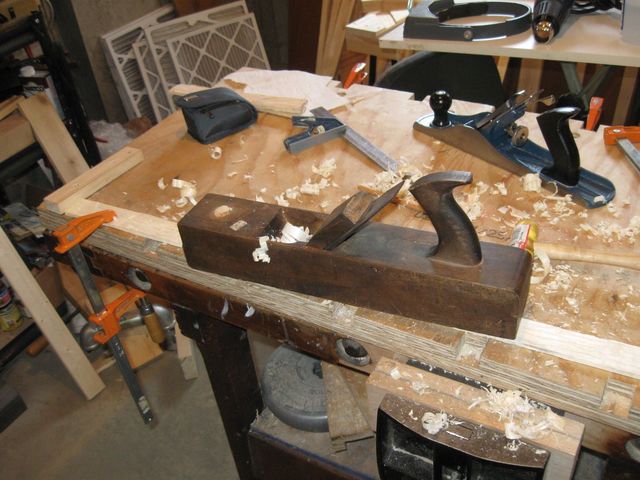
Planing With an Old Wooden Plane
That didn't work out so well since setting it up to cut that junky geen wood was proving a bit challenging. So I tried my Stanley metal jack plane on it.
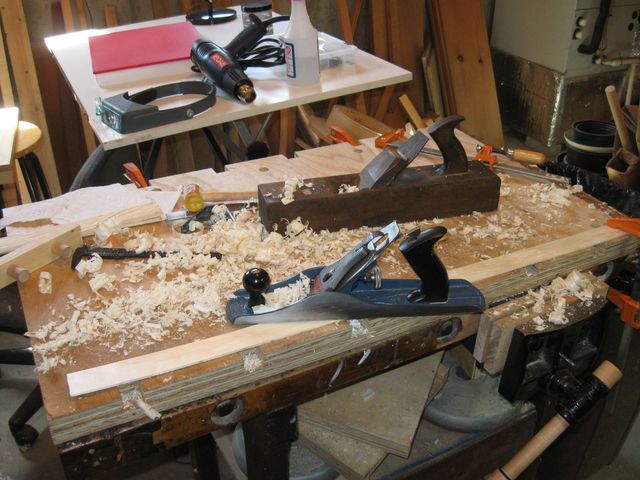
Stanley Jack Plane
That worked a bit better, although it was constantly jamming the throat on the chips. But I continued to work on it and finally got it down to 1/8" thick.
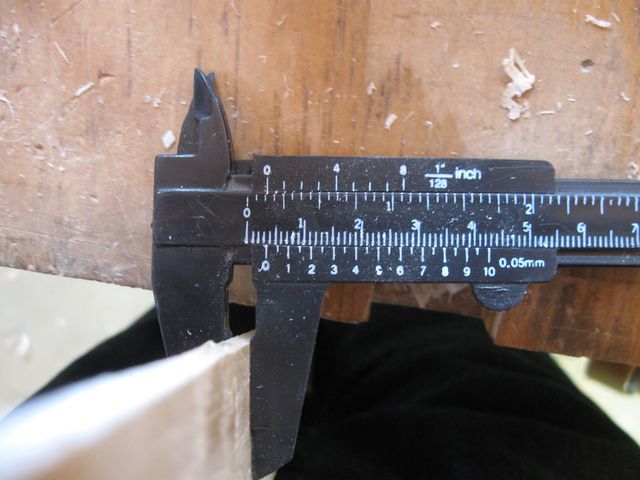
The Wood is now 1/8" Thick
That is a bit thick for bending, but I got tired of working on it and wanted to get on with the bending experiment. The width of the wood is about what I would use for the sides of the dulcimer, 1 1/2". So this should be a somewhat realistic test, at least as far as the width of the wood is concerned.
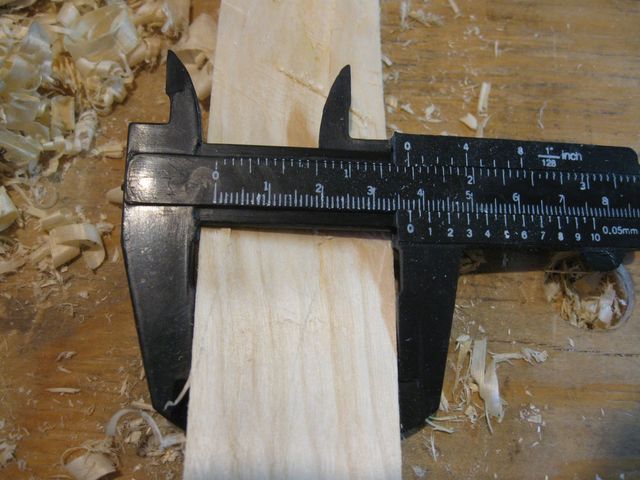
The Width of the Wood is 1 1/2"
According to what I read on the interwebs, the ideal wood bending temperature is somewhere around 400° F. So I set up the pipe and the heat gun and turned the gun onto its 500° setting.
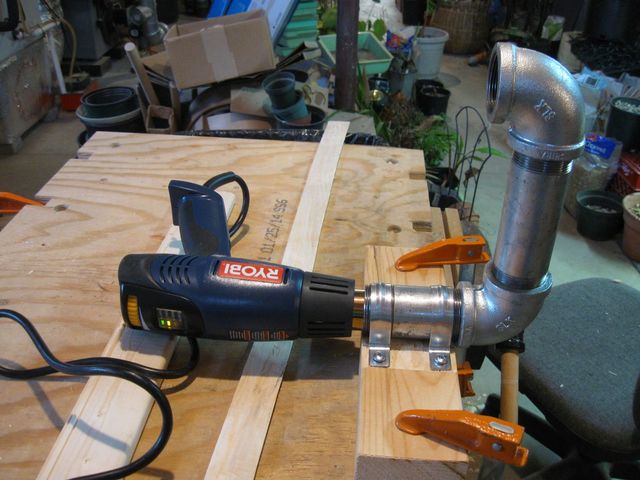
The Setup with the Heat Gun Turned On
The gun has lights on it to tell how hot it is set to.
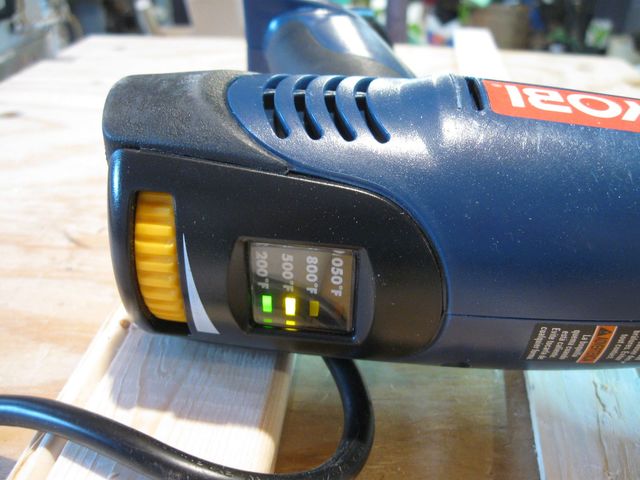
It is Set to 500° F
I presume that is the temperature of the air coming out of the nozzle. That does not necessarily mean that the pipe will get that hot. But it seems like a conservative place to start.
That made the pipe heat up, but it wasn't really doing much to the wood. I don't have any way to measure the temperature of the pipe other than to spritz it with water and guess based on how fast the water evaporates. The water didn't steam much at this setting, so I turned it up a notch.
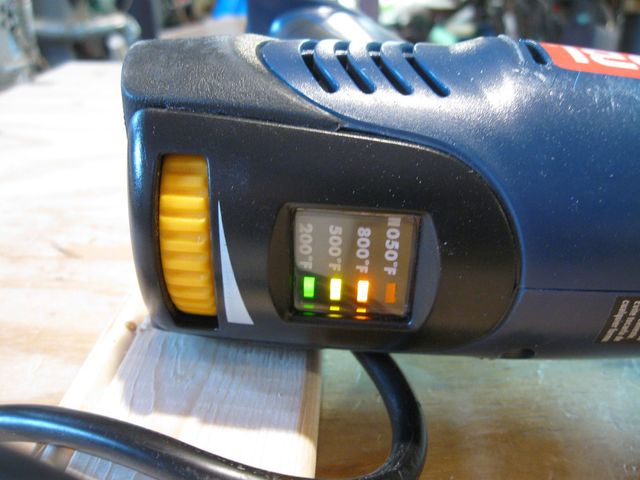
The Gun is Set at 800° F
I didn't notice a lot of change in the response of the wood. I didn't know whether the setting was too low or I had not waited long enough or the pipe idea just wasn't working. So I ran out of patience and cranked it all the way up.
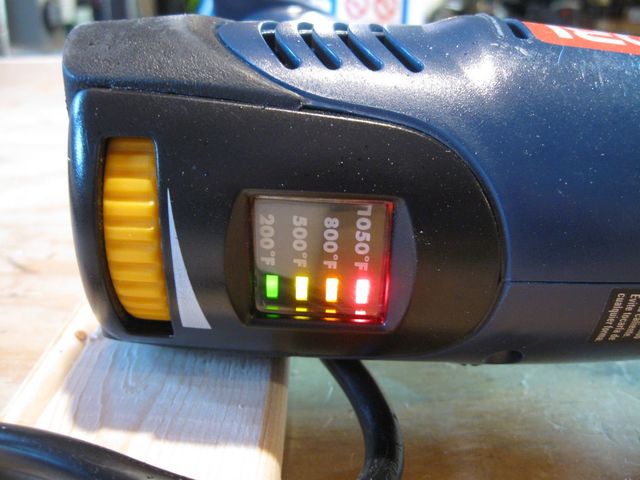
The Gun is set to Its Maximum, 1,050° F
After a few minutes of that, the water I sprayed on the pipe didn't seem to even hit it before it disappeared. I don't know what the temperature was, but the pipe was pretty hot.
With the max setting cranking, I tried the wood again. This time I saw some success.
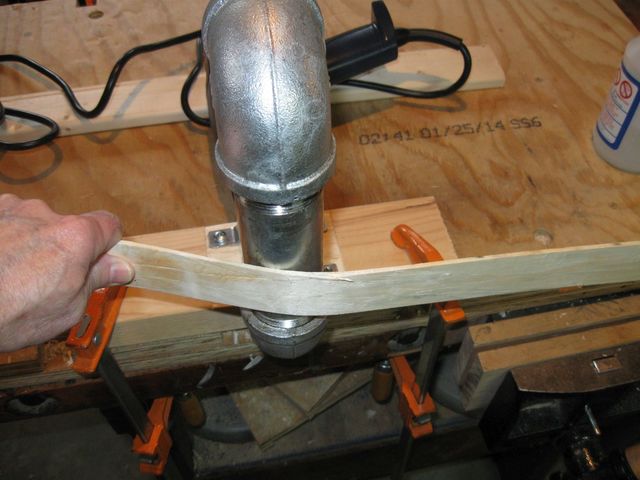
The Wood Bends with Gentle Pressure.
As I practiced, it became clear how to work this. I sprayed some water on the wood where I wanted to bend it. Then I put the wood against the hot pipe and gently rocked it back and forth to increase the area of the wood that was being heated. I pushed only gently on the wood.
Then, the magic happened. I could feel the wood become flexible from the heat and wrap itself around the pipe. The feeling is subtle, but very real. The wood is springy... springy.... springy.... then ahhhhhh, it relaxes and moves. Then I move on to the next place and repeat. Very cool.
So I took a guess at the shape of a dulcimer side and put some reverse curves into the wood.
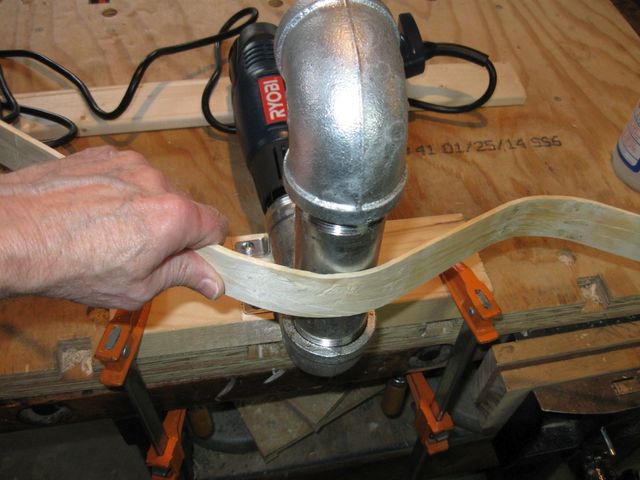
This is Kinda Fun
When I got done, here is what I had.
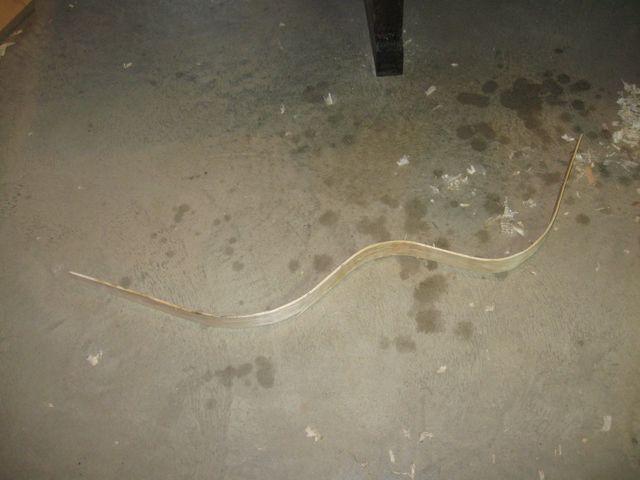
The Wood is Bent
There is no springback to worry about. Once the it takes a shape, it doesn't move. Here is what it looks like from a different angle.
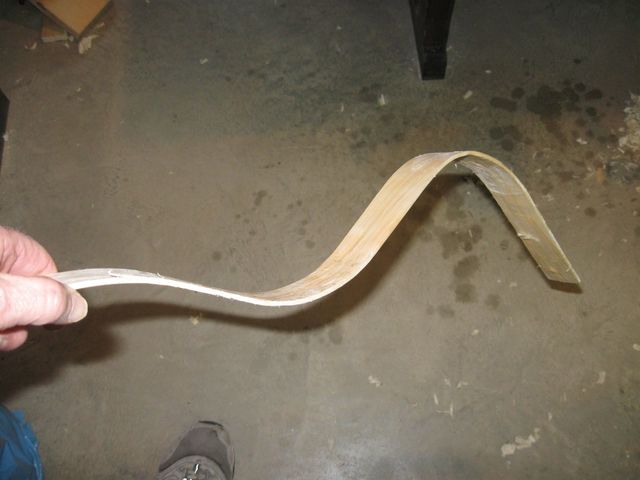
That Curve is Permanent
This was way easier than I had hoped for, even though the piece of wood is 1/8" thick. The recommended thickness for bending guitar sides is about 1/16". So maybe I got lucky with that junk wood. The wood is pretty green, which could make it easier to bend. I will have to try some drier wood to make sure.
So, before I risk my Mesquite I am going to practice on some other wood that isn't so junky. I may get some oak or maple, then cut it more accurately to the correct thickness and see if I can bend that. I will also make a jig to get the correct shape for the sides. The test piece is not the correct shape, just a rough approximation.
I want to make some actual sides of the correct shape to get some more practice. But that is for another day. Right now, I am going to bask in the glory of success. Basking usually doesn't last very long on my projects.
